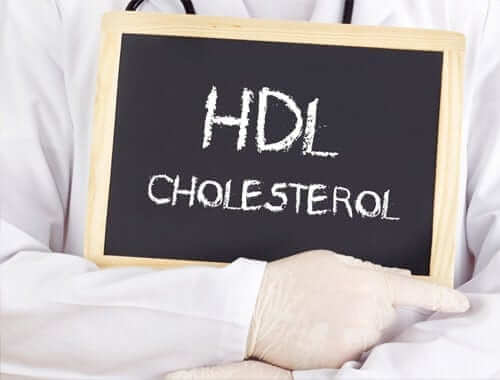Cholesterol levels are one way to measure your heart health, which is important for people with diabetes who are at an increased risk of developing cardiovascular problems. HDL is commonly known as the “good” cholesterol and these levels are supposed to be high for optimum well-being. Discover 3 natural ways to help raise your HDL levels.
- Often people are told to lower their cholesterol, but this specifically speaks to the LDL or bad cholesterol (low density lipoprotein). HDL cholesterol (high density lipoprotein) is the “good” cholesterol. The higher the levels, the better it helps to minimize your risk of heart disease. LDL cholesterol is carried through your body to tissues and organs. Too much can build up, clog your blood vessels and block your blood flow. HDL picks up the extra cholesterol in your blood and transports it to your liver so it can be broken down. For this reason, HDL is known as good cholesterol. Higher levels can lower your risk of a heart attack and other cardiovascular problems. Talk to your health care team about your target HDL cholesterol level as well as your LDL levels. Learn to follow certain easy lifestyle changes.
- Know your bad habits and address them immediately. If you smoke, it is time to quit. If you have difficulty, talk to your doctor about programs or devices (nicotine patch, gum or medications) that can help you kick the habit. For people who are overweight or obese, losing just a few pounds can improve your HDL levels. Work with a dietitian, diabetes nurse educator and/or physical trainer to develop a diet and exercise plan that fits into your routine. Regular aerobic exercise, such as walking, biking and swimming, can help increase your HDL levels in just two months. It is important to exercise and try to do it daily. If time or conditioning is a factor, you can break aerobic activity into segments of 10 minutes, 3 times a day for a total of 30 minutes.
- Alcohol should be consumed in moderation. This means one drink daily for women and two for men.
- Certain foods can help boost your HDL levels. Choose healthier fats, such as polyunsaturated and monounsaturated fats. These are found in canola, olive and peanut oils. Avoid foods with trans-fats and saturated fats, such as fast food and foods found in boxes or bags. About 25 percent of your calories should come from fat, with less than 7 percent consumed in saturated fat. Fit Omega-3 fatty acids into your diet. These are found in salmon, tuna, flaxseeds and nuts such as almonds and walnuts. Whole grains are also heart-healthy, including oats and oat bran. Purple food such as plums, grapes and eggplant have been shown to help raise HDL levels due to the Resveratrol content. If you are looking to indulge, try 1.5 ounces of dark chocolate (over 60% cocoa) with a 4-ounce glass of red wine to help raise your HDL levels and reduce your cravings for a sweet treat. Cut your sugar intake, monitor your blood sugar regularly and share the results with your doctor during routine visits.
- Your doctor may also recommend various medications to help raise your HDL levels. Always discuss possible contraindications and side effects with your health care team to make an educated decision. Medications used to lower LDL cholesterol that can increase HDL levels include niacin, statins and fibrates. Always talk to your doctor before taking any medication or over-the-counter supplement. Inquire about using an HDL testing kit at home to keep track of your progress.
While people are always trying to lower their cholesterol for better health, it is important to raise your HDL cholesterol levels. A few basic lifestyle changes can go a long way. A balanced diet, regular exercise and avoiding unhealthy habits can boost your HDL levels for improved heart health







Leave A Comment